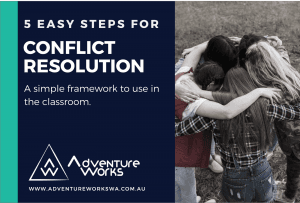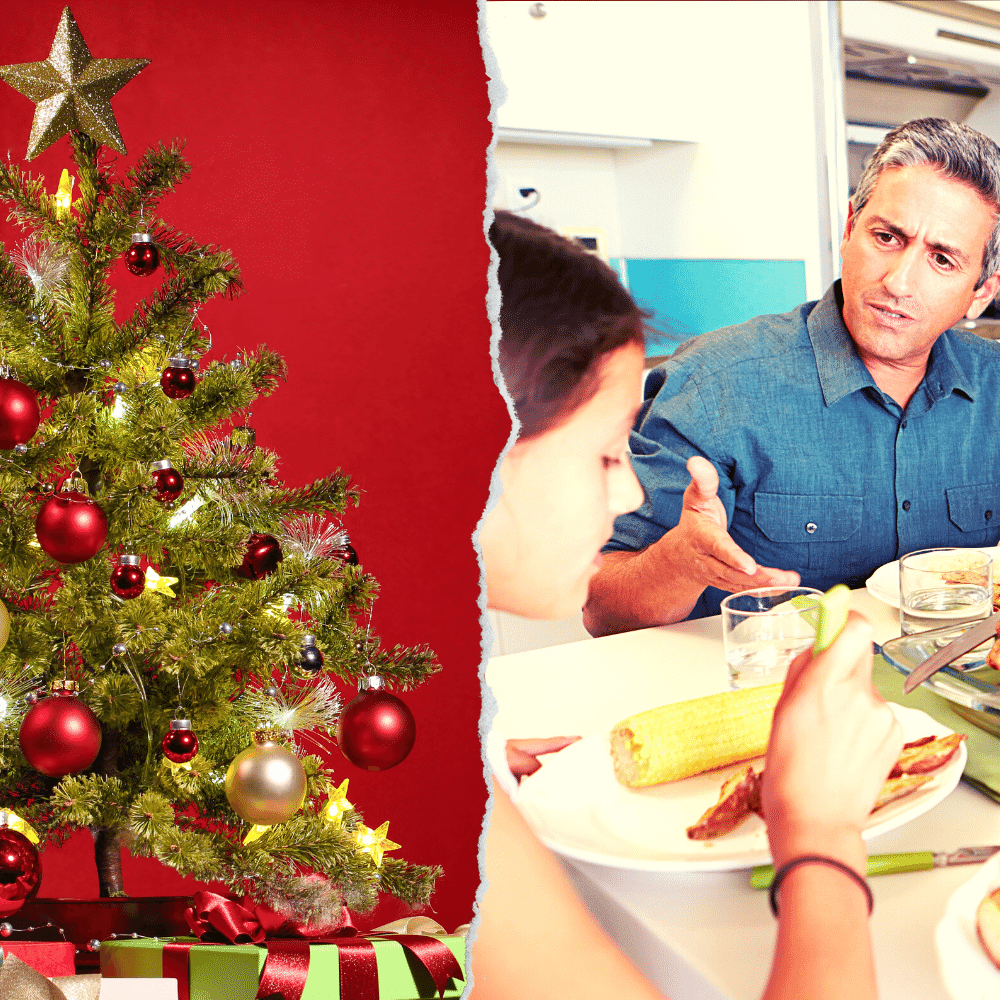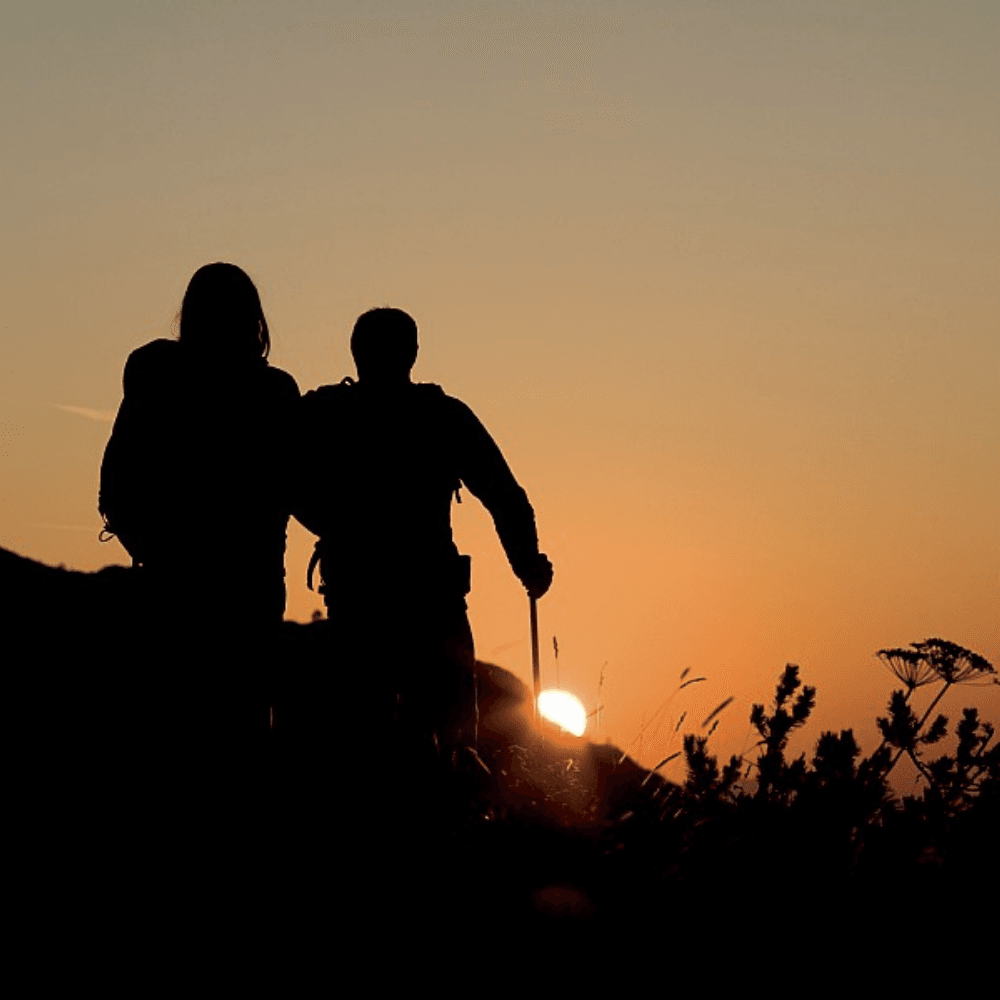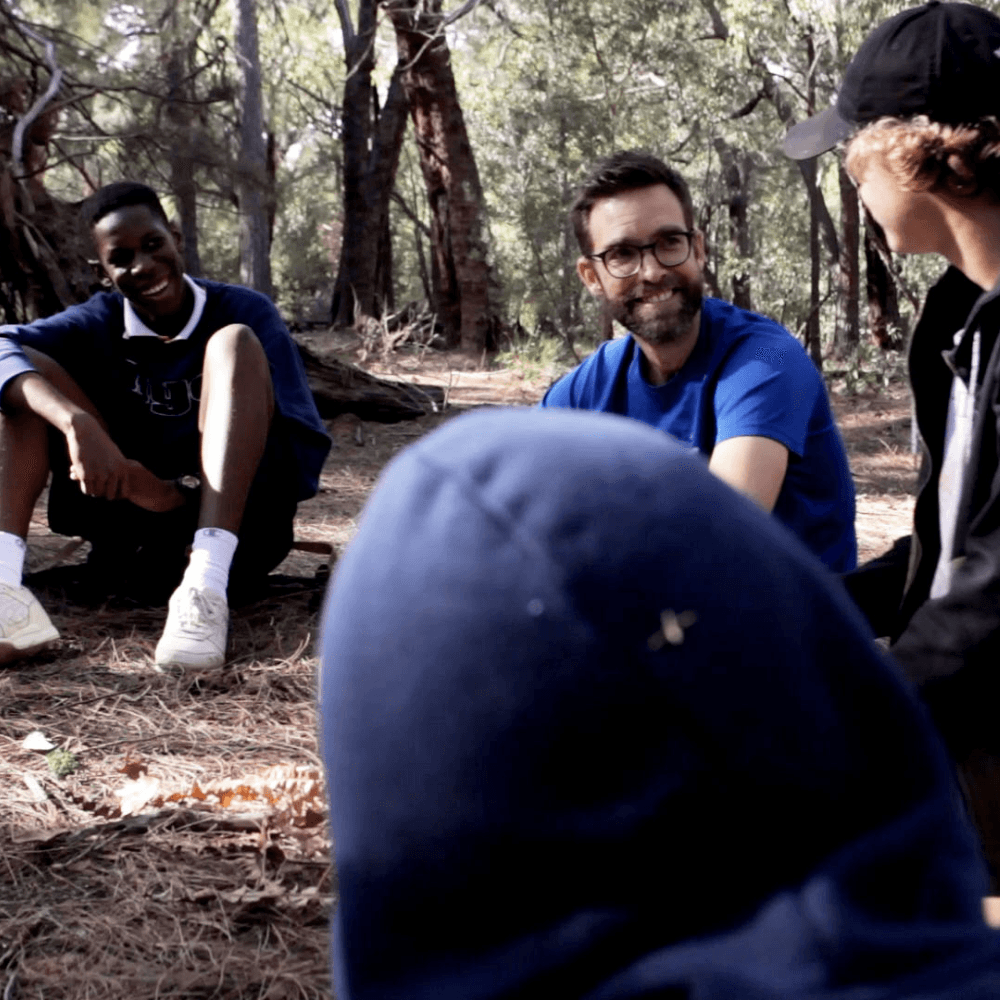Helping children and young people to identify and foster healthy emotions and behaviours is vital to developing resilient and well-rounded individuals. As a teachers, guiding children’s behaviour in positive ways can be done using the Child/Adult Behaviour Model within your classroom activity.
Healthy adult behaviours are key to positive relationships, higher levels of resilience, and good leadership skills, and are an important part of a young person’s journey as they transition into adulthood.
But we don’t always give enough focus to these behaviours during this important phase of a young person’s life, and some commonly neglected traits in healthy adult behaviour include:
- Being comfortable and proud of who you are
- Taking responsibility when appropriate
- Embracing our emotions in the face of a challenge
The Child/Adult Behaviour Model is a tool used to help young people identify healthy adult behaviours, to then confidently transition into healthier, more positive adults.
The model was developed as a tool to open discussions about the typical shifts in a person’s relationship with themselves and others, that occur between the oscillations that humans experience over a lifetime.
Below is a table outlining the transition of child to adult behaviours that are important to encourage in young people as they grow and mature.
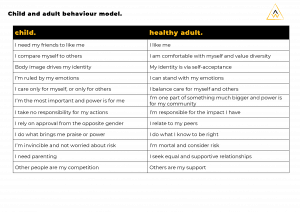
Throughout our lives, we will all be at different stages of growth, and that’s okay. It’s important to note that the point of using the Child/Adult Behaviour Model is not to identify and differentiate between behaviours that are right or wrong. Rather, it is about identifying behaviours that may be limiting to a person’s growth and development.
How do we foster healthy adult behaviours in young people?
As we’ve just mentioned, try to remove the idea that the Child/Adult Behaviour Model is a lesson in right from wrong. Holding onto this perspective can potentially limit a participants’ openness and honesty in the identification and self-reflection process. When conducting these exploration activities as part of our camps and Into Adulthood programs, our facilitators always aim to be explicit about this.
So, before delving in, remember:
- Child behaviour is not inherently bad. Labelling child behaviours as bad and adult behaviours as good is not helpful. Encourage participants to freely identify these and frame them as a natural part of our childhood selves.
- Child behaviour is part of many (if not all) adults. Each adult behaviour is an essential part of healthy adulthood. This does not mean that all adults exhibit these attributes, or that they exhibit them all the time.
- When we are aware, we can choose. Once participants develop the awareness of child behaviours, they can make conscious choices about the potential impact of each and decide what a situation requires.
The role of a child is to learn – from both themselves, and those around them. Using the Child/Adult Behaviour Model, we can encourage young people to consider where they are on this spectrum, and how to transition to healthier behaviours as part of their journey into adulthood.
Create a space for conversation
To be able to identify healthy adult behaviours to work towards, we must first learn to understand the what and why. Start by creating a space for conversation with students to discuss what healthy adult behaviours are and why they’re important for positive growth and change on their transition into adulthood.
Before students consider child/adult behaviours relevant to themselves, seek both positive and negative examples they may have noticed in external sources, such as other people, movies, or celebrities.
Self-reflection exercises can sometimes be confronting for students and cause resistance from students to participate. Starting the conversation by getting students to identify behaviours they observe around them first helps to alleviate these pressures sometimes associated with self-reflection.
Activity: Using the Child/Adult Behaviour Model above, hand out Child/Adult Behaviour cards (one card between 2-3 students) and allow some time for students to read and familiarise themselves with the cards. You might choose to brief the activity like this:
Take a moment now to read through the different behaviours on these cards. As you will see, on one side are a selection of behaviours common to children (although not exclusively, as we’ll discover shortly) and some complementary healthy adult behaviours.
I want to express that this list is not complete, it is a small sample of behaviours and it is also not a perfect list, so if there are some things on there that you disagree with or are unsure about, that is welcome here too. It all belongs. This list is simply meant as a tool to support the session’s activities and to start a conversation about our progress from child-like behaviours through to healthy adult behaviours.
As you read them, just notice which ones jump out at you and why. There will be an opportunity in a little bit to discuss this further. For now though, I want you to get into groups of three.
Reflect on thoughts and behaviours
Once students feel more comfortable with the activity, and have a better understanding of what healthy adult behaviours are and why they’re important, encourage students to turn the focus of these behaviours on themselves.
Remember, this is not a conversation about what is right or wrong, and it is important to continue reminding students of this. Rather, it is an opportunity to reflect on behaviours that may be limiting to growth and development.
Activity: Split the group back into smaller groups of four or five and give each group a different child behaviour. Invite the groups to take turns sharing stories with each other about a moment when they experienced that behaviour. The story can be from any time in their lives.
After 10 minutes, invite the groups to share the behaviour they were given and one of the stories from their discussion with the bigger group. As a larger group, ask the participants the following questions, and take 3-5 answers:
- Why might we want to leave some of these behaviours behind us as we move into adulthood?
- How do they hold us back?
- How do these behaviours impact others in our community?
Back in the smaller groups, invite participants to examine the relevant adult behaviour and come up with three ways that specific behaviour supports us to be better members of our community. Take an answer from each group after 5 minutes.
Lastly, as a big group again, debrief with the question:
- In your school environment, which of these behaviours do you think are important to model to younger students and why?
Identify the difference
Once students have taken the time to really reflect on their thoughts and behaviors, draw out a discussion with them to understand why they have identified those behaviours, and what the solution – the healthy adult behaviour – would be instead.
Questions for discussion:
- How can you begin to exemplify healthy adult behaviours?
- What actions, thoughts, or feelings would signify those changes?
Be a positive role model
As the teacher, young people likely look to you as a guide and leader, so it’s important to consider your own behaviours to ensure you can be a positive role model for your students. Ask yourself:
- What are some healthy adult behaviours that are important to you?
- What behaviours could you change to become more reflective of healthy adult behaviours?
- How can you model these behaviours to your students through your words, actions, and intentions?
Of course, a young person can have many different adult figures in their life. While it’s important to continually reflect on how your own behaviour can be a positive influence on young people, also consider if there are other members of a young person’s life that may not be such a positive influence. This will help you to understand the context of each young person’s life and the support they may need.
Understanding a young person’s personal context and influences in their life will also help you to identify where students are learning unhealthy behaviours they may be expressing or exhibiting. If you are concerned about anything you learn about any of your students, make sure to seek counsel from the recommended authorities and support staff at your school.
5 easy steps for conflict resolution
Challenges and conflict are part of our everyday life, so it makes sense that a fundamental part of developing healthy adult behaviours is building skills in conflict resolution.
Having the right skills and understanding on how to skillfully navigate solutions to everyday challenges supports our ability to develop and maintain strong relationships and skills in resilience building.
Our free Conflict Resolution ebook outlines a simple framework to use in the classroom to help you support your students as they navigate their own personal conflict and adversity. Download your free copy here.



